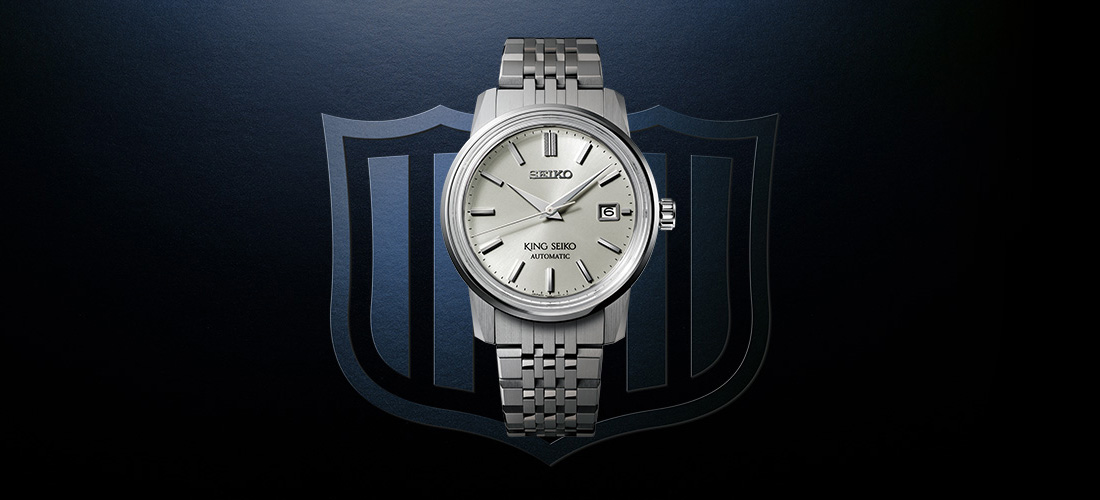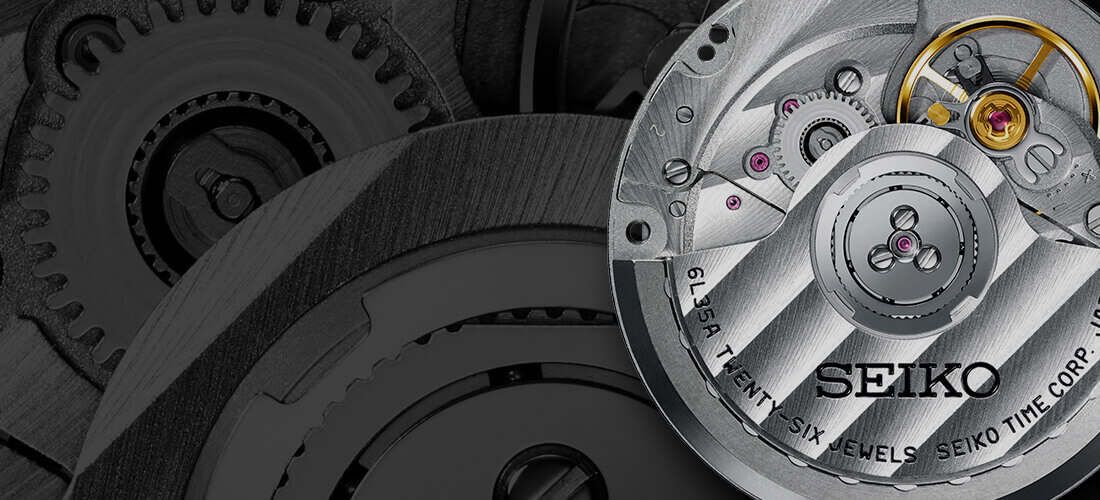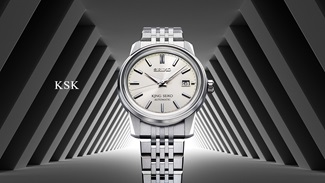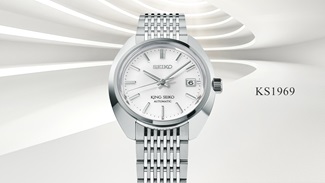Reflecting on the history
of King Seiko masterpieces
Timeless brilliance with an enduring legacy of half a century

King Seiko was born in 1961,
amid rapid economic growth in Japan
At the time, Japan was successfully rebuilding after the war, prompting an extended period of spectacular growth and development. Industry was flourishing and more cars were on the roads as new expressways were built between the major cities. The advent of electrical appliances – in particular, televisions, refrigerators and washing machines, dubbed the three sacred treasures of consumerism – coincided with a rapid improvement in living standards throughout the nation.
It was during this period of changing consumer lifestyles, amid the rapid economic growth that laid the foundations for the modern Japanese economy, that the King Seiko journey began. It was a truly innovative, high-performance wristwatch developed in response to consumer demand for functional yet stylish timepieces.

Tokyo’s Kameido district - home of the Daini Seikosha factory, the birthplace of King Seiko
Daini Seikosha was originally the watchmaking department of Seikosha in Kameido. It was split off as an independent manufacturer in 1937. The Pacific War had a significant impact on production volumes, and the Kameido production plant was destroyed.
Kameido is part of Tokyo's shitamachi downtown precinct and has long been associated with the distinctive style and can-do character of the area. It was this sense of local pride that helped Daini Seikosha to recover after the war and that inspired the stunning design of the King Seiko luxury wristwatch.




The first King Seiko,
launched in 1961
The watch’s key features included sharp and angular watch hands, solid and imposing indexes, and a slim-looking case design. A manual-winding movement with 25 jewels powered the first King Seiko.
King Seiko and Grand Seiko production duties were split between the Daini Seikosha and Suwa Seikosha factories
In 1942, a new affiliate, Daiwa Kogyo, was set up at Suwa, in Nagano Prefecture, which served as the remote base for the Daini Seikosha factory. Daiwa Kogyo was renamed Suwa Seikosha in 1959. Suwa Seikosha was to become the engineering epicenter, with the goal of creating a luxury wristwatch brand of outstanding accuracy superior to its Swiss rivals.
In this way, King Seiko and Grand Seiko have taken parallel paths on the journey to high-end wristwatch excellence. While Grand Seiko represents the ultimate embodiment of precision engineering, King Seiko offers a modern and distinctive design reflective of the brand's Tokyo origins.

Seiko News edition from 1961
King Seiko in the 1960s
The first King Seiko model sports a refined aesthetic and a distinctly modern feel, as featured in this visual from a 1961 brochure for retailers. It was priced in the range of ¥12,000 to ¥15,000, equivalent to the average starting salary of a university graduate at the time, thus positioning King Seiko as a high-end luxury offering.




The second-generation King Seiko (KSK*),
launched in 1965
*King Seiko with a hacking seconds hand
With the introduction of a hacking seconds hand, this model cemented King Seiko as a truly original and unique timepiece.
Design features such as larger lugs, a 12 o'clock index with a knurled pattern seen on luxury lighters, and sharper contours on the case have all been reflected in subsequent models and survive to this day.
A manual-winding movement with 25 jewels powered the watch.


Exceptional accuracy at an affordable price
The second-generation King Seiko sported key features such as the sharply edged case and solid, chunky lugs that went on to become defining characteristics of the King Seiko brand. The KSK ushered in a new era in Japanese-made luxury watches, offering outstanding accuracy and introducing a revolutionary new seconds hand regulating mechanism.
Subsequent models had even higher standards of accuracy, certified by the Japan Chronometer Inspection Institute as equivalent to the finest luxury Swiss watches. An affordable luxury watch that strikes the perfect balance of styling, precision timekeeping and price.





King Seiko 45KCM*, launched in 1969
*King Seiko Calendar Chronometer
The 45KCM introduced more curved contours, in contrast to the linear design elements of previous King Seiko models. It was also the first King Seiko-branded model equipped with a high-precision movement operating at 36,000 vibrations per hour. The new form factor, coupled with the distinguished King Seiko pedigree and key design flourishes such as an additional facet in mirror finish between the top and side surfaces, resulted in a truly unique timepiece with a luxury feel. A manual-winding movement with 25 jewels powered the watch.
The demise of King Seiko
The King Seiko brand spawned a range of models with features such as fully integrated, airtight, one-piece watch cases and advanced design elements. But by the 1970s, the era of King Seiko was drawing to a close, prompted in no small part by the arrival of the quartz watch in 1969, and production was eventually shut down.

King Seiko is revived.
An enduring style that has stood the passage of time.
Following a more than 60-year hiatus, 2022 saw the triumphant relaunch of King Seiko, with its elegant styling brought back with modern technology.
The reborn King Seiko, dubbed the “Newest Classic,” represents the fusion of cutting-edge watchmaking technology with the timeless brilliance of the original.















